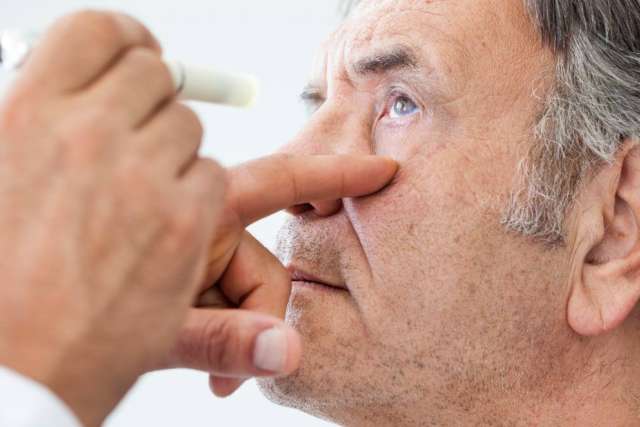Dear Doctors: What happens in macular degeneration? My eye doctor found something called drusen in my eye, and now I’m supposed to take these special vitamins. He didn’t say anything about macular degeneration, but a co-worker scared me by saying drusen are the first sign of it.
Dear Reader: Macular degeneration, also known as age-related macular degeneration, is a disease in which damage to a certain part of the eye results in the loss of central vision. It typically begins to affect adults who are 55 and older, and risk increases with age. Macular degeneration is the leading cause of vision loss in older age. It doesn’t cause complete blindness, but the loss of central vision impairs the ability to read, drive, recognize faces and complete routine tasks. It can also interfere with day-to-day mobility.
To better understand the disease, we should begin with a bit of anatomy. The retina is a thin layer of light-sensitive cells in the back of the eye. It receives the light that enters the eye and sends that information to the brain for processing into images. Near the center of the retina is a small collection of cells, slightly less than a quarter-inch across, known as the macula. It contains a high concentration of photoreceptor cells that give us our central vision, most of our color vision, and that allow us to see fine detail. Our peripheral vision, which is everything outside of the central line of sight, is processed by the rest of the retina.
There are two types of macular degeneration -- wet and dry. The former develops due to an abnormal growth of blood vessels, which leak and cause scarring of the retina. It’s somewhat rare and occurs in less than 10% of cases. The majority of people develop dry macular degeneration, which is a gradual thinning of the macula. This brings us to drusen.

These are small white or yellowish deposits of debris that can form within the retina. Drusen are described as either hard or soft. Hard drusen, which have well-defined borders and are spread out, become common as people age. Soft drusen are larger, with indistinct borders, and tend to cluster together. Soft drusen, which can grow, can cause bleeding and scarring in the cells of the macula. An excess of drusen can contribute to developing macular degeneration. However, we want to reassure you that having drusen does not automatically mean you have macular degeneration.
A specialized combination of vitamins and minerals that were developed with data from AREDS 2, a large-scale study into eye diseases, has been found to reduce risk by 25%. These are available without a prescription at any drug store. You can also reduce risk by maintaining a heathy weight, getting regular exercise, not smoking, managing high blood pressure and cholesterol, and eating a healthy diet. This includes foods with omega-3 fatty acids, which may also help to reduce risk.
Now that you and your eye doctor are aware of the drusen, it’s important to continue to have regular eye exams in order to monitor them.
At UCLA Health Stein Eye Institute many of our specialists research and implement new treatments for most eye conditions. Learn more and schedule an appointment.
(Send your questions to [email protected]. Owing to the volume of mail, personal replies cannot be provided.)





